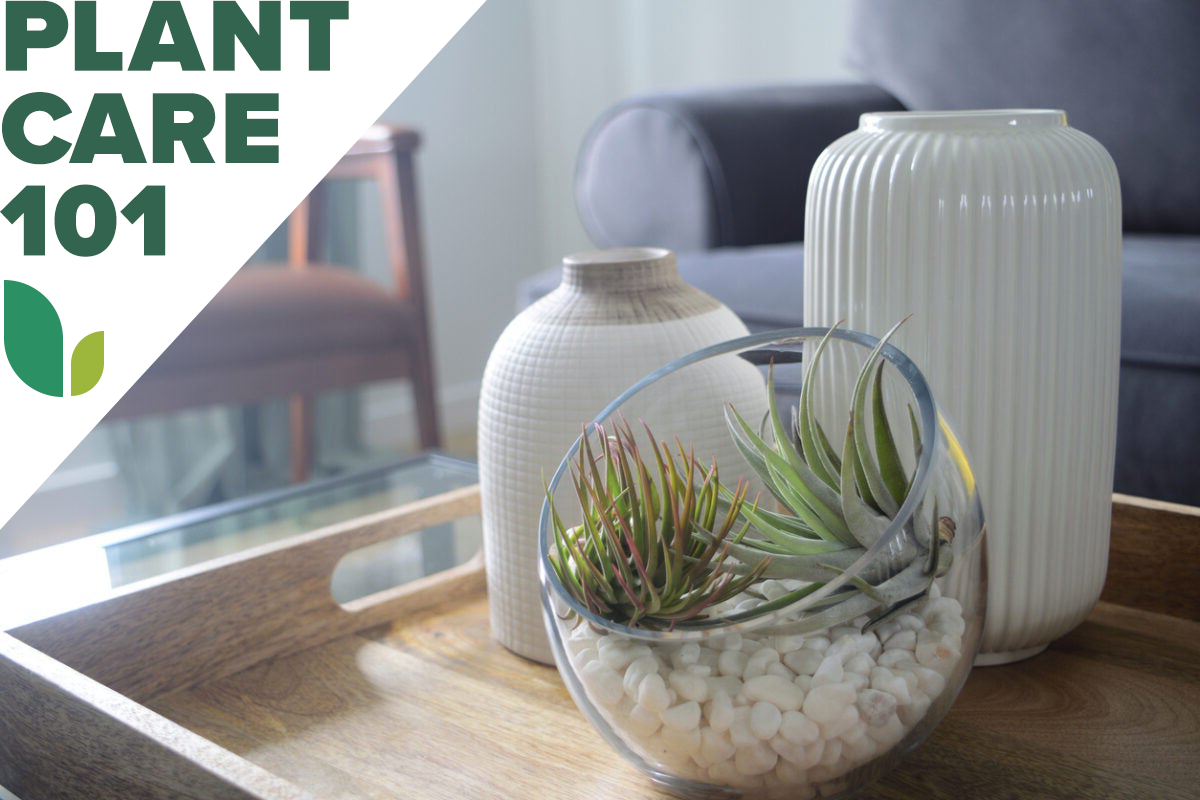We may earn revenue from the products available on this page and participate in affiliate programs. Learn More ›
Air plants are ideal houseplants for beginners or anyone who doesn’t want to get their hands dirty because they don’t require soil to grow. Since they absorb water and nutrients through their foliage rather than their roots, they can be positioned wherever their owner prefers without a speck of soil in sight.
Most air plants grow in rosettes, resembling spiky grass clumps or sea urchins. However, some air plants, such as the Spanish moss that drapes over tree branches in the South, have a more wiry and dangly appearance. Their flowers vary from the “tiled” pink paddles of Tillandsea cyanea and T. lindenii, which are edged with purplish-blue blooms, to the inconspicuous three-petal, green flowers of the aforementioned moss, T. usneoides.
But even though air plants are easy to grow, they do require some care to thrive. Use these tips to learn all about how to take care of air plants the right way.
RELATED: 11 Head-Turning Houseplants You Won’t Believe Are Real
Air Plant Care at a Glance
Common Name: Air plant, sky plant
Scientific Name: Tillandsia spp.
Soil: None, or orchid mix
Light: Varies by species
Water: Spray, soak, dunk, or mist
Food: Bromeliad plant food or low-nitrogen fertilizer
Temperature and Humidity: 50 to 90 degrees Fahrenheit
Propagation: Offsets
Safety: Nontoxic
How to Care for Air Plants
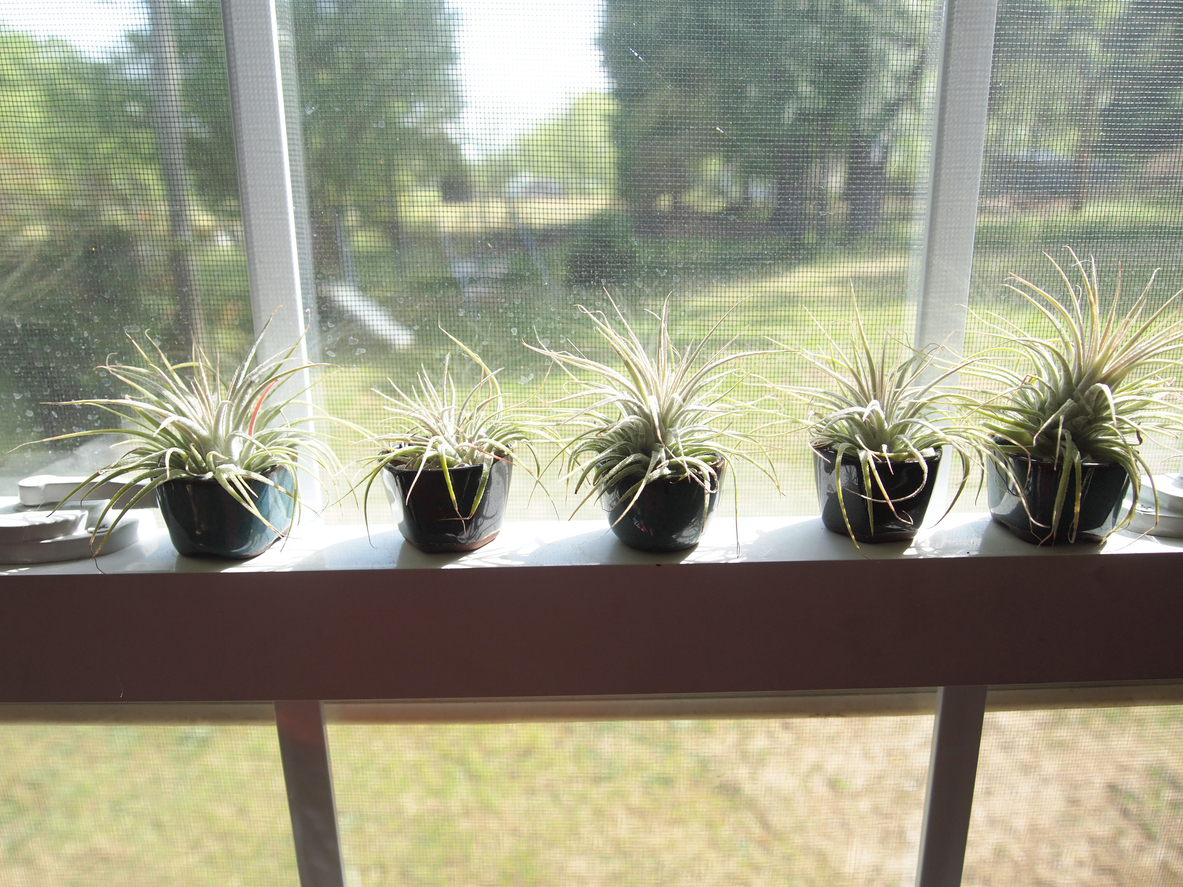
Native to tropical regions of North and South America, most Tillandsia are hardy in USDA zones 9 and higher. When considering how to take care of air plants, keep in mind that those with the greenest foliage are usually rainforest varieties, while silver types are more likely to be desert dwellers, so different air plant types can have different needs.
No matter the type, it’s not a good idea to handle air plants more than is necessary. since the “receptors” with which they take in nutrients and water can incur damage if they are handled too much.
RELATED: The Best Plants for Every Room of the House
Selecting Soil for Air Plants
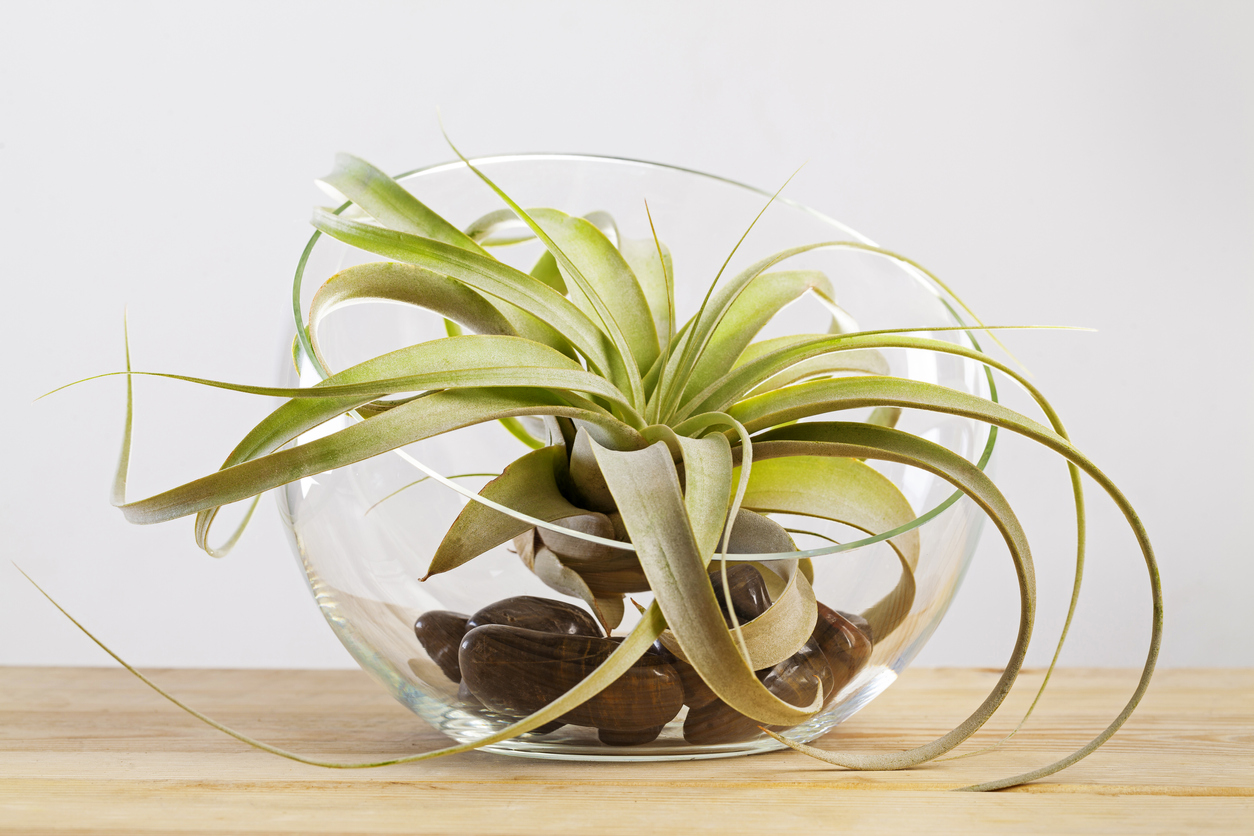
These amazing little houseplants typically don’t require soil since the trichomes on their foliage absorb the moisture and nutrients they need. However, the so-called “paddle” types like T. cyanea and T. lindenii do best when planted in a fast-draining medium, such as an orchid mix containing chipped bark or a standard potting mix with additional pine needles to improve aeration.
Choose the Right Light
Care for air plants varies based on whether they are rainforest or desert species. The thin-leaved, green rainforest types, like T. cyanea, prefer partial sun, filtered sun, or bright indirect light. Meanwhile, thick-leaved silver desert varieties, like T. xerographica, might be able to tolerate full sun.
If you are unsure of the best lighting for your particular species, steer a middle course and try setting it on an east-facing windowsill, table, or shelf where it receives only morning sun. You can also please most Tillandsia varieties by placing them near a south-facing window with a sheer curtain that protects them from midday rays.
Water Your Air Plants
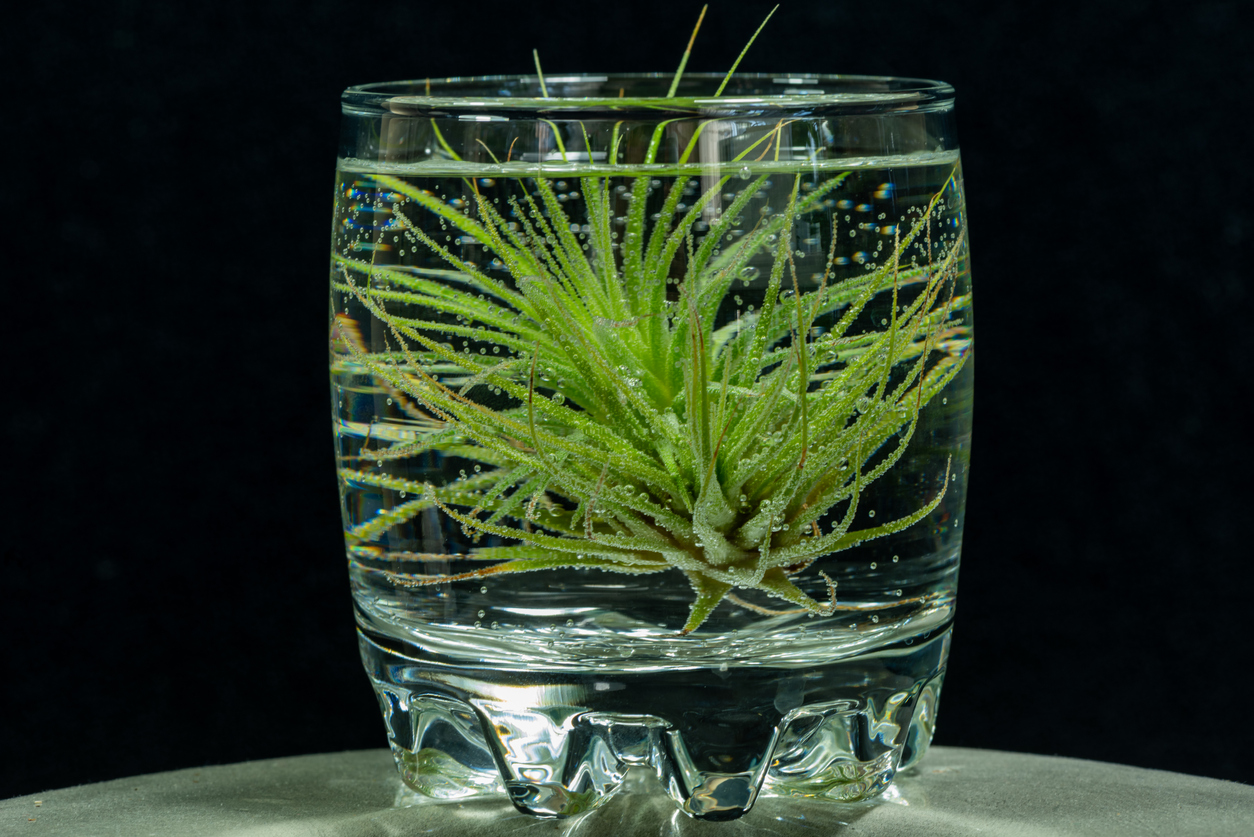
Learning how to water air plants is fairly simple: You can generously mist your Tillandsia with water a couple of times per week, preferably with room-temperature rainwater or spring water, both of which can supply nutrients. Alternatively, watering air plants can be accomplished by soaking them in a lukewarm bowl of water for up to 12 hours once per week, turning them upside down to dry afterward.
There are some varieties that shouldn’t soak, though. Bulbous air plant types should be dunked briefly and shaken every other day instead. Those with unusually fine or fuzzy foliage should only be misted every other week. As for “paddle” types, irrigate them as you would orchids, and water their potting mix a couple of times per week. Whichever way you water your air plants, ensure they completely dry out again within 4 hours.
Fertilize Your Air Plants
You don’t need to fertilize air plants since many of them absorb nutrients from dust, but doing so can help them thrive and encourage reproduction. You can mix either bromeliad plant food or a low-nitrogen fertilizer into the water you use for soaking or misting.
During spring and summer only, fertilize air plants once a month. For soilless plants, use a quarter of the amount of fertilizer recommended on the packaging. For plants growing in orchid bark, use half of the recommended fertilizer amount. In all cases, the plant food and fertilizer should contain no boron, copper, or zinc.
Set the Temperature and Humidity
From spring through autumn, air plants should live in warm temperatures up to 80 degrees Fahrenheit. In winter, move them to a location with temperatures closer to 60 degrees Fahrenheit. The cooler temperature helps spur them into blooming, which most often occurs in late winter or midsummer.
Keep in mind that the green rainforest varieties, like T.cyanea, require high humidity. Therefore, you may want to place these types atop a humidity tray, in a bathroom, or near a sink. Silver varieties tend to be desert dwellers, so they can get by with less humidity.
RELATED: 12 Plants You Can Grow Successfully in the Shower
Prune Your Air Plants
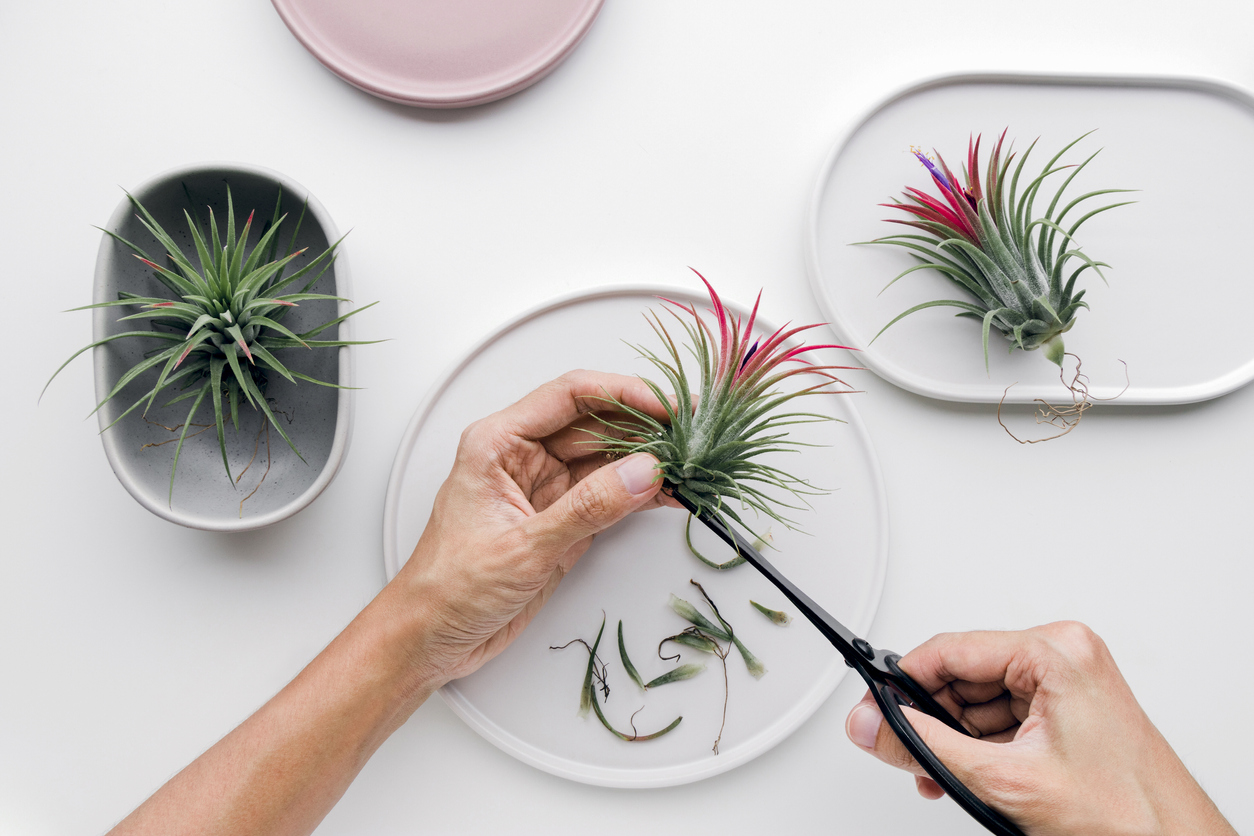
Air plants are slow growers with a growth pattern that doesn’t require much pruning. However, you can maintain their health and appearance by removing any dead or brown leaves with clean hands or sterilized tweezers or scissors.
You can also trim any extra long or unruly roots without damaging them, but it’s not necessary for the plant’s health. Once the air plant blooms and the flower dies, you can remove the whole flower stalk close to its base.
How to Propagate Air Plants
Because Tillandsias only bloom once before going into a gradual decline, they will produce offsets (called pups) around their base after flowering—these can carry on once the original plant fades away. If you prefer, you can leave those in place to eventually form a clump or you can detach some of the progeny to share with others.
- Wait until the pups are about one-third of the mother plant’s size.
- Shortly after you water the mother plant, use a sharp, sterilized knife to cut the offsets free.
- Allow the division wounds on all plants to callous over for a few days before attempting to water them again.
Types of Air Plants
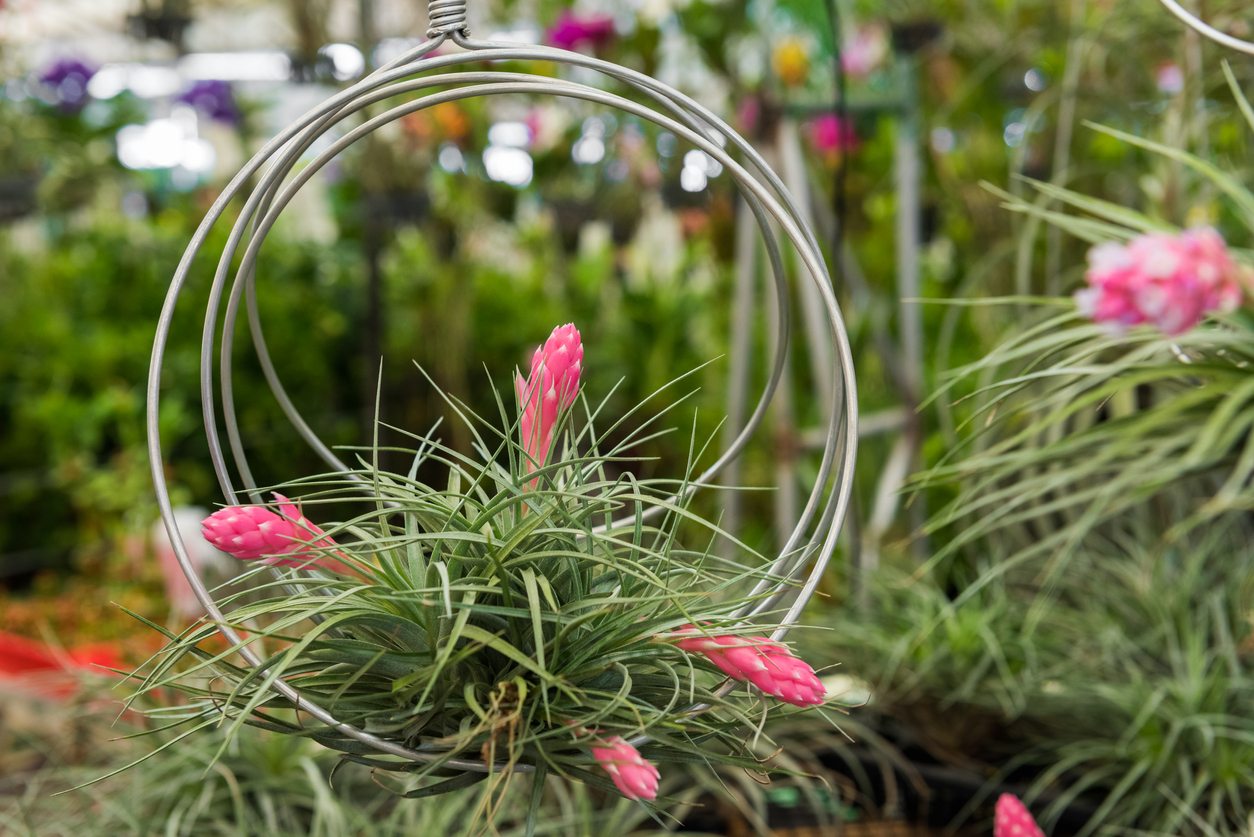
There are several types of air plants to choose from, including:
- T.cyanea: This plant makes a rosette of thin green leaves about 16 inches wide, from which rises a 6-inch-tall paddle-shaped collection of pink bracts with pansy-like periwinkle blooms protruding from its sides.
- T. ionantha: The upper leaves of this 6-inch to 1-foot-tall plant turn red when it is ready to flower, with those blooms resembling purple spikes.
- T. pruinosa: Sometimes called the fuzzy wuzzy air plant for its soft-looking silvery foliage, this Florida species grows about 10 inches tall, and its pink bracts shoot out violet flowers.
- T.: These desert dwellers are among the largest air plant species, growing up to 4 feet tall. They feature tight rosettes of broad silvery leaves and yellow or red flowers.
Safety Considerations
Air plants aren’t toxic to either pets or people, but they can potentially present a choking hazard, so keep them out of reach of children and animals. Hanging air plants in glass globes or a similar hanging container is a good option in this case, but ensure that they are well secured so they don’t fall or break.
Potential Pests and Diseases
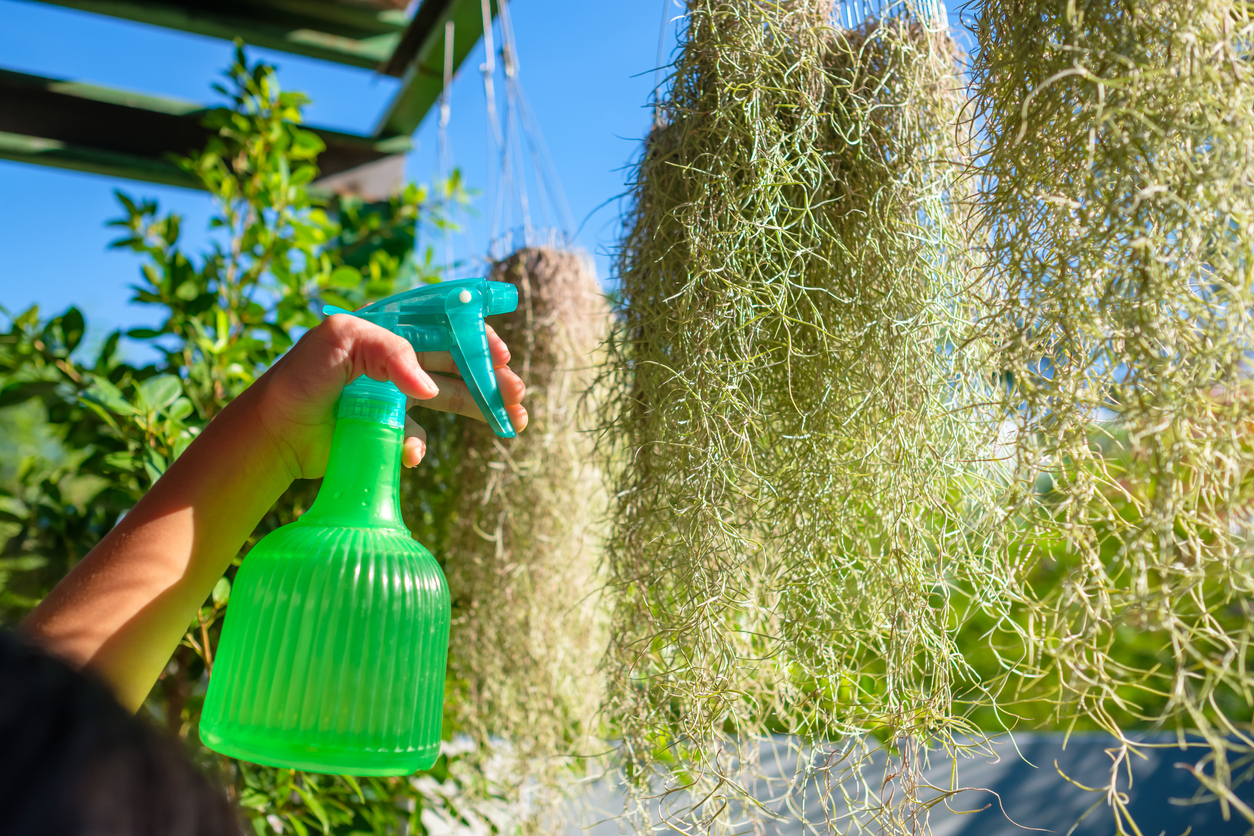
Although air plants don’t often suffer from insect problems, they can shrivel from underwatering. But as long as a shriveled plant hasn’t completely dried up, you can often revive it by soaking the plant in a cup of lukewarm water for up to 12 hours then letting it fully dry.
Air plants can also rot from overwatering. Rot generally begins as dark, wet-looking brown spots near the base of your air plant. You can potentially stop it by removing affected outer leaves, making sure that the interior of the plant is dry, and dusting it with an antifungal such as cinnamon.
Excessive sunlight is another factor that can hurt your airplant’s health. Sunburn causes dry-looking lighter brown splotches. If you notice these spots, trim the affected outer foliage before shifting the plant to a less sunny location.
FAQs
Q. Do air plants flower?
Yes, air plants flower once in their lifetime. Some air plant flowers are bright and elaborate, looking very different from the rest of the plant, while others are small, subtle, and hard to spot.
Q. Do air plants grow?
Yes, air plants grow, but they grow very slowly. Most air plant types start as seeds, grow into plants, bloom, produce offsets, then die. This entire cycle can take several years to complete.
Q. How long should you soak air plants?
You can soak most air plants for up to 12 hours, as long as your home is arid enough that they will completely dry out within 4 hours afterward. Setting the plant on a paper or cloth towel after watering can speed the drying process. It’s also a good idea to turn it upside down to dry so water doesn’t continue to sit on its leaves.
Looking for more low-maintenance houseplants? Check out our guides on caring for snake plant, jade plant, and peace lily.

